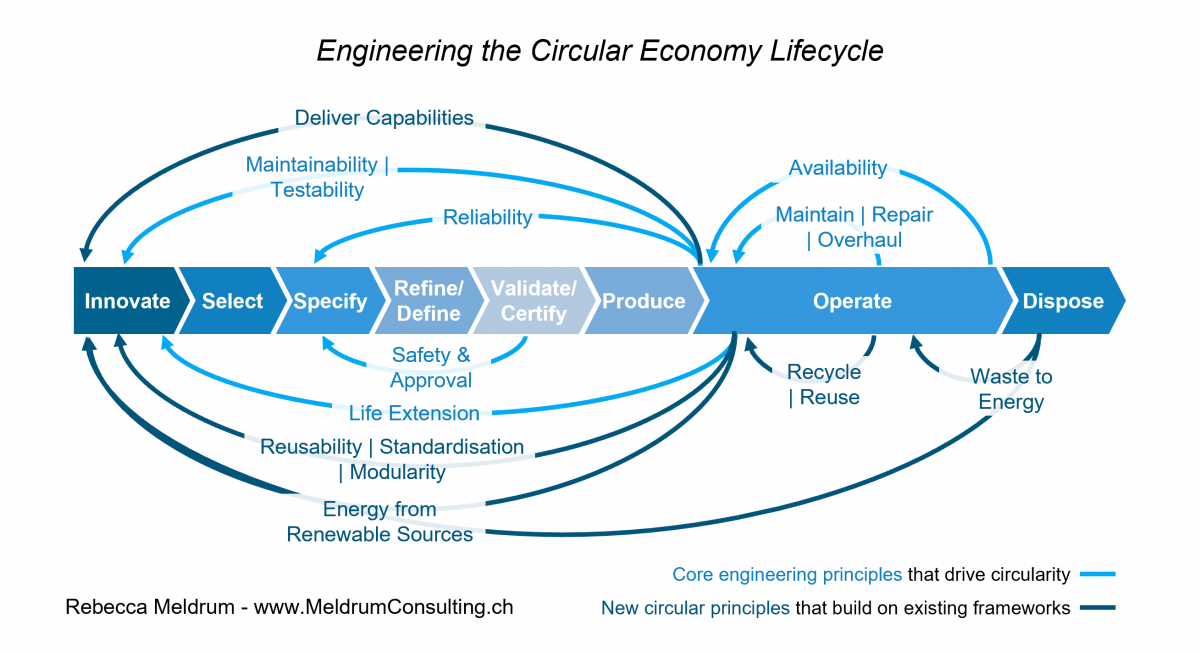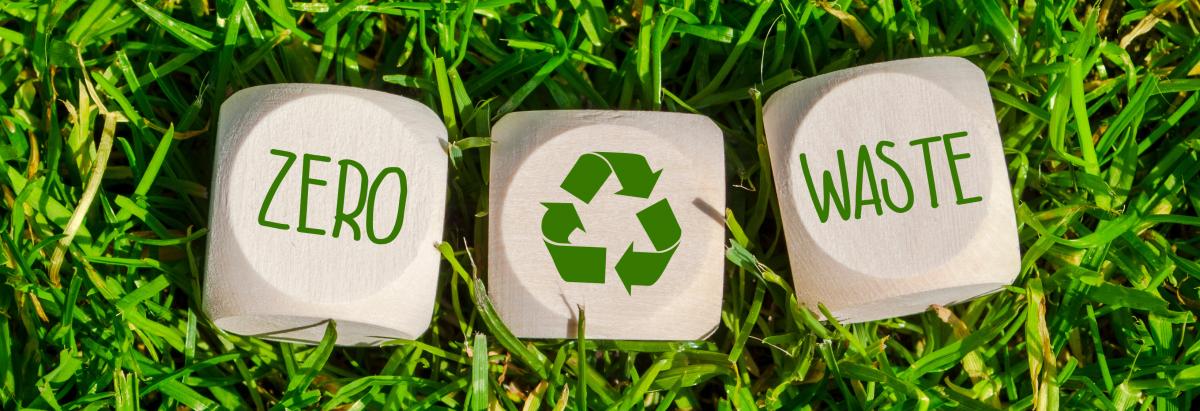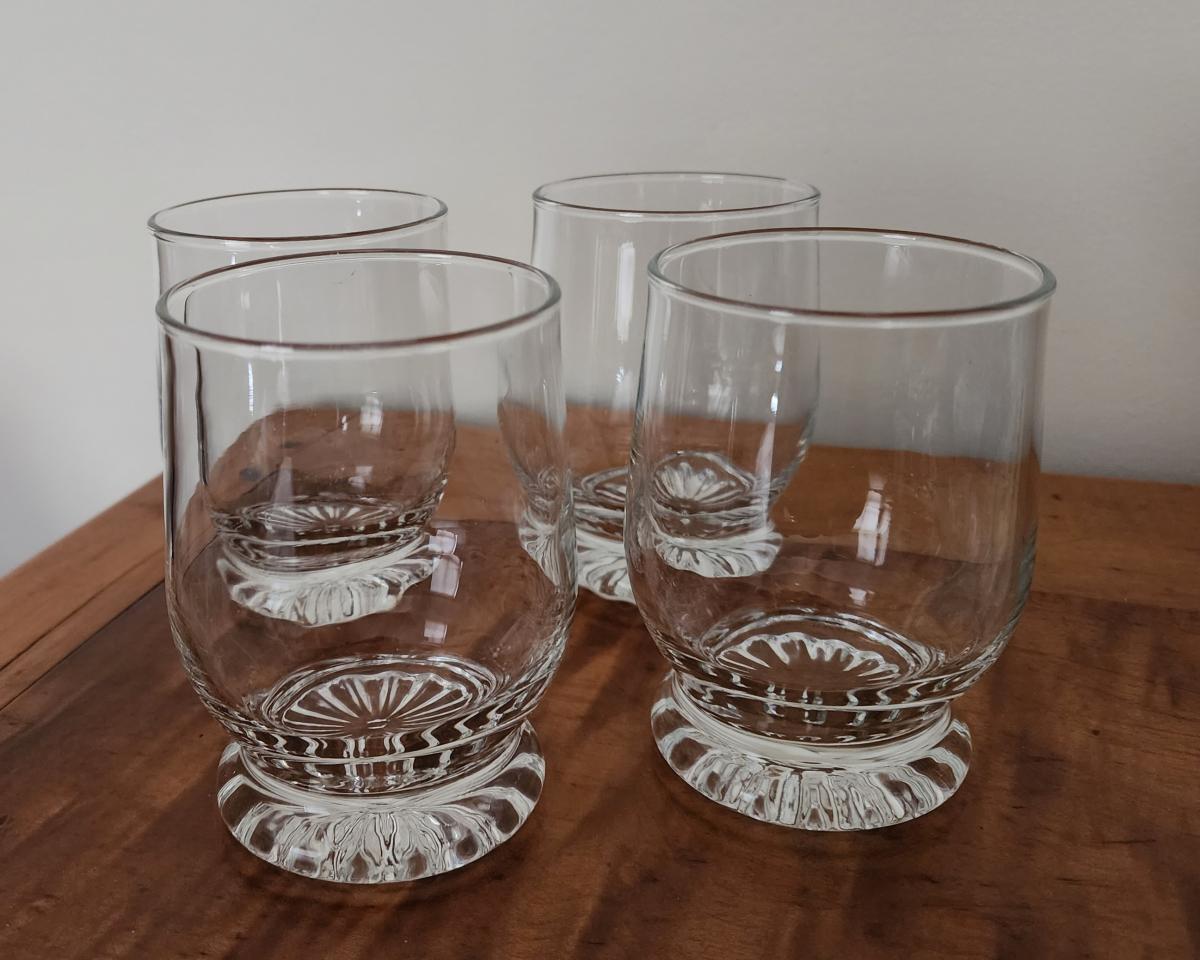Systems thinking and the circular economy
Systems thinking is a way of thinking about our products, businesses and services not just in terms of the final product or service, but also the ways that product or service impacts people and planet.
As we discussed briefly, a system is a group of objects and forces that influence each other. We live in many systems:
- solar system
- justice systems
- IT systems
- economic systems
Systems thinking means considering the effects on all parts of a system rather than just one. We live on the planet earth, which is a closed system. Waste we generate stays on earth. Damaging the environment in one area can have effects on other areas.
Circular economy
The circular economy uses systems thinking to create products that are meant to be recycled or reused. You can see the difference between a traditional linear economy and a circular economy in engineering, in the image below. Circular economies do not end in waste; products are reused or recycled, or even better designed with the next purpose in mind.

Image attribution: Mc4zero, CC BY-SA 4.0 on Wikimedia Commons
Repair, reuse, recycle
A circular economy requires that products are made in a way that does not create waste. Making products that have little or no waste is much better than relying on recycling. Products that are built to be reusable or easily repaired are the best.
There are many examples from the past when people owned their clothes, furniture, and other items for life or even longer.

Image attribution: by Stockwerk-Fotodesign on Adobe Stock
Technological waste
Technology produces a lot of waste, some of it is toxic. The materials used to make phones, laptops, games consoles and other technology are hard or impossible to recycle, and therefore create waste when they are created and waste at the end of their life.
There is a push for tech companies to make products that can be easily repaired rather than thrown away. Allowing people to fix their phones and replace broken parts will save a lot of money and stop a lot of waste.
Reusable bottles and containers
In many places, milk used to be sold in reusable glass bottles. The empty bottles were left out after use and taken back to be cleaned and refilled with fresh milk. There are some grocery stores that sell their food without any packaging today, where customers bring their own containers to fill with the products they want to buy.
Jars as drinking glasses

For many years, Vegemite and other products were sold in jars that were designed to be drinking glasses when empty. Jars were even printed with cartoon characters and pictures. When glass recycling became more available, the jars were not made anymore. But it is much better to reuse glass. Glass recycling uses a lot of energy – to melt the glass and reshape it – and putting jars on a truck makes air pollution. Putting Vegemite and Nutella in jars that were reused was a circular economy.
Repair
People did not always buy new things like we do today. In the past, people repaired things when they broke or reused them in a new way. There are many cities with ‘repair cafes’ where you can take broken items to be fixed, saving you money, and saving the environment.
While there are many ideas from the past that we could bring back, there are also ways to create modern items that make less waste.
Further resources
RMIT has a Circular Economy Hub where you can learn more about what is happening at RMIT and with industry partners.
RMIT also as a Sustainable Retail Framework where you can learn more about RMIT’s changes. They also have events such as repair cafes, fashion swaps and more.
To learn more about circular economy and systems, visit the Ellen Macarthur Foundation.
